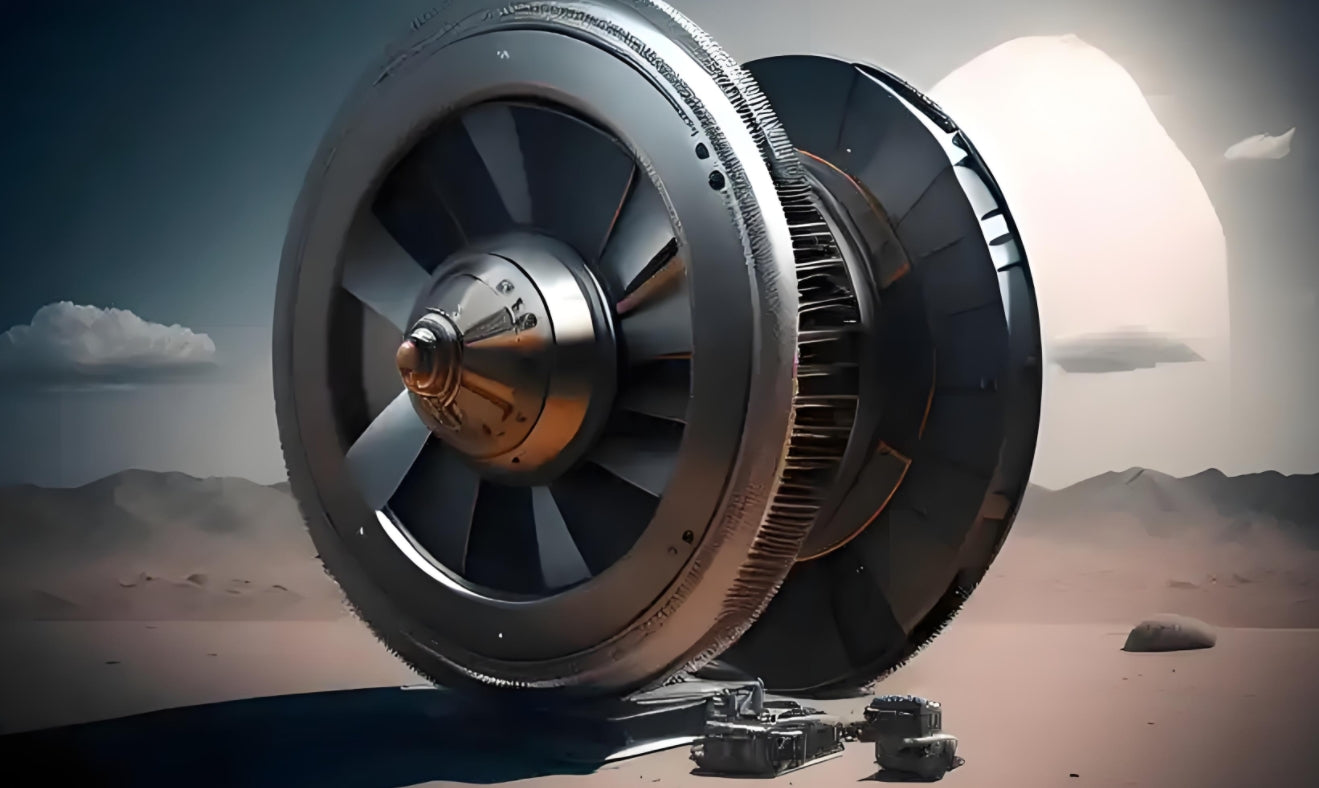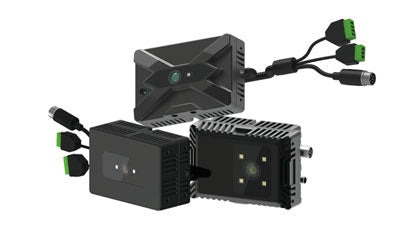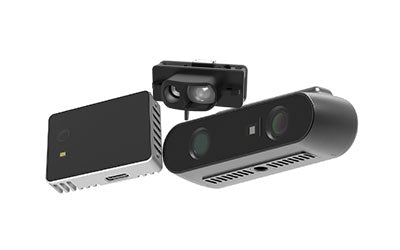Turbocharger Speed Sensors & ToF Tech: Boosting Automotive Performance

With the continuous development of the automotive industry, especially in the high-performance car sector, turbochargers and turbocharger speed sensors play a crucial role in improving engine power and efficiency. Time-of-Flight (ToF) technology, a precise distance measurement technology, is gradually penetrating the automotive sector, particularly in autonomous driving and environmental perception systems, where it plays an indispensable role. This article delves into the working principle of turbochargers, the application of speed sensors, and how ToF technology supports the enhancement of automotive performance and intelligent driving experiences.
What is a Turbocharger?
A turbocharger is a mechanical device driven by the engine’s exhaust gases that compresses more air into the engine's combustion chamber, increasing the intake volume. This method of boosting power not only enhances the engine’s power output but also provides more power without increasing engine displacement. Therefore, turbochargers are widely used in high-performance sports cars, luxury vehicles, and some commercial vehicles, helping achieve higher standards in power output.
A turbocharger generally consists of two parts: the turbine and the compressor. Exhaust gases pass through the turbine section to drive the turbine rotor, which in turn powers the compressor to compress air and deliver it into the engine. This process allows the engine to achieve higher power output at smaller displacements, while reducing fuel consumption.
What is ToF Sensor?
Time-of-Flight (ToF) technology is a distance-sensing technology based on optical measurement, widely used in various fields such as robotics, autonomous driving, 3D imaging, and object recognition. ToF technology emits a light signal (such as laser or infrared light), and measures the time it takes for the signal to travel from the emitter to the reflector and back to the sensor. The distance the signal travels is then calculated to provide precise distance measurements.
How ToF Technology Works
The core principle of ToF sensors is based on the fixed speed of light. By calculating the time difference for light to travel, the sensor determines the distance of an object. The sensor emits a light beam, which reflects off the object and returns to the sensor. The sensor records the return time, and using the known speed of light, it accurately calculates the distance the light traveled, thereby determining the distance between the object and the sensor.
Advantages of ToF Technology
-
High Precision:
ToF sensors provide millimeter-level precision, making them ideal for applications that require high-accuracy positioning and environmental sensing. -
Real-time Feedback:
ToF sensors provide real-time feedback, ensuring rapid responses to dynamic environments. -
Unaffected by Light Conditions:
Unlike traditional visual sensors, ToF technology is not dependent on external light sources, allowing it to function in low light or complete darkness, making it ideal for complex environmental sensing tasks.
Applications of ToF Technology
-
Autonomous Driving:
ToF technology can sense the surrounding environment in real-time, identifying obstacles, pedestrians, and other vehicles, thus providing critical data for autonomous driving systems. -
Industrial Robotics:
ToF sensors help robots accurately position themselves in complex environments, avoid collisions, and optimize their work paths. -
3D Imaging:
ToF technology is commonly used for 3D scanning and imaging, widely applied in medical imaging, virtual reality, augmented reality, and other fields.
With its precise distance measurement and real-time feedback, ToF technology is a crucial component for intelligent driving, industrial automation, and environmental perception systems.
Turbocharger Speed Sensors: Precision Monitoring of Turbo Speed
Turbocharger speed sensors are primarily used to monitor the speed of the turbine rotor in the turbocharger, ensuring that it operates within the optimal range. The speed of a turbocharger can reach hundreds of thousands of revolutions per minute, or even higher, making the precision and response speed of the sensors particularly critical.
How Turbocharger Speed Sensors Work
Turbocharger speed sensors typically use magnetic or optical principles to measure the rotational speed of the turbine rotor. Magnetic sensors rely on the interaction between magnets on the turbine rotor and the sensor probe to monitor speed changes in real time. Optical sensors use light beams to detect the rotation of the rotor surface. These sensors can operate stably in high-temperature, high-speed environments, providing real-time feedback.
Precise control of turbo speed is essential for the engine control system. When the turbocharger speed sensor detects abnormal speeds, the system can respond instantly by adjusting the fuel injection or turbo system operation to ensure engine stability and performance.
Applications of Turbocharger Speed Sensors
Turbocharger speed sensors play a vital role in modern vehicles. They can:
-
Monitor Turbo Speed in Real-Time:
By accurately measuring turbo speed, sensors help the engine control system respond promptly. -
Improve Engine Efficiency:
The data provided by the sensors help optimize fuel injection, air compression, and exhaust emissions, improving the overall engine performance. -
Ensure System Safety:
When the turbo speed exceeds safe limits, the sensor can send an alert to the system, preventing overheating or damage. -
Enhance Driving Experience:
Precise control of turbo speed ensures smooth power delivery, improving driving comfort and responsiveness.
ToF Technology in Automotive Applications
Time-of-Flight (ToF) technology is a method for measuring distance by calculating the time it takes for light or laser to travel from the emitter to the reflector. Its main features include high precision and rapid response, and it is widely used in distance measurement, 3D imaging, and object detection.
The Role of ToF Technology in Autonomous Driving
In the development of modern intelligent vehicles, ToF technology is applied in multiple critical areas, especially in autonomous driving and advanced driver assistance systems (ADAS). ToF sensors emit laser pulses and precisely calculate the reflection time to build a 3D map of the surrounding environment, enabling precise detection of obstacles, navigation, and collision warnings.
For example, in autonomous driving, ToF technology helps vehicles identify and measure obstacles, pedestrians, other vehicles, and the surrounding environment in real-time. With real-time data transmission, the vehicle can react swiftly to avoid collisions, enhancing driving safety.
The Potential of ToF Technology in Turbocharger Monitoring
As ToF technology progresses, it may integrate with turbocharger speed sensors to provide multi-dimensional data for more precise monitoring. Through ToF sensors, the system can not only obtain real-time turbo speed information but also monitor key parameters like pressure and temperature changes inside the turbocharger. This data would further optimize the turbocharger’s operation, improving the efficiency of the vehicle’s powertrain.
Advantages of ToF Technology
ToF technology in the automotive sector, especially in turbocharger monitoring and intelligent driving systems, offers several significant advantages. As intelligent and automated technologies evolve, ToF technology’s precision, efficiency, and all-weather performance make it a key component in enhancing vehicle performance and safety.
-
High Precision Measurement:
ToF sensors provide millimeter-level precision, excelling in monitoring turbocharger speed, axial displacement, and temperature sensors. Additionally, they accurately measure the vehicle’s surroundings, helping detect obstacles or dangerous objects, ensuring driving safety. -
Real-Time Feedback:
In turbocharger and intelligent driving systems, ToF technology offers instant feedback to handle rapid changes in dynamic environments. For example, the slight changes in turbo speed can be instantly captured by ToF sensors, enabling the control system to respond quickly to avoid overload or malfunction. In driving, ToF sensors monitor surrounding objects in real-time to assist autonomous driving systems in decision-making. -
All-Weather Adaptability:
Unlike traditional optical sensors, ToF sensors do not rely on external light sources. They can work stably under bright light, low light, darkness, rain, snow, or haze, making them crucial for autonomous driving and intelligent driving systems. ToF technology ensures that the vehicle’s sensing system operates normally, especially during night driving or in adverse weather conditions. -
Multi-Function Integration:
ToF sensors can work with other sensors (such as cameras, millimeter-wave radar, and ultrasonic sensors) to build multi-layered sensing systems. For example, in intelligent driving systems, ToF technology can be integrated with visual cameras and radar systems to form a comprehensive environmental sensing network. This multi-sensor fusion improves the vehicle’s environmental adaptability, ensuring better object and vehicle detection in complex environments, reducing accident risks. -
Precise Turbocharger Monitoring:
For turbochargers, ToF technology can accurately monitor the speed and temperature changes of the turbine blades, improving efficiency and lifespan. In high-speed operations, turbocharger safety is critical, and the high-precision measurement of ToF sensors can prevent damage due to overheating or mechanical failure. -
Enhanced Advanced Driver Assistance Systems (ADAS):
In ADAS, ToF sensors offer precise distance measurement and spatial awareness. Combined with LiDAR and cameras, ToF technology can continuously update the 3D point cloud of the surrounding environment and predict the location of obstacles, enabling dynamic obstacle avoidance, lane-keeping, and other autonomous driving functions. -
Improved Vehicle Dynamic Control:
ToF technology can assist vehicles in achieving precise dynamic control. By real-time sensing the relative position between the vehicle and obstacles, ToF sensors help the vehicle plan its path, control collision avoidance, and execute emergency braking, effectively reducing the likelihood of accidents. In automated parking systems, ToF technology can accurately determine the distance between the vehicle and obstacles, enabling safer and more efficient parking. -
Intelligent Turbocharger Adjustment:
The efficiency and response of a turbocharger directly impact engine performance, and ToF technology can monitor the turbocharger’s operation in real time, adjusting its state intelligently. For example, during low speeds, the turbo pressure can be reduced to enhance fuel efficiency, while at high speeds, the pressure can be increased to boost power output, ensuring the engine operates at its optimal state.
ToF technology in turbocharger monitoring and intelligent driving systems showcases its advantages of high precision, real-time feedback, all-weather adaptability, and multi-function integration. In the future, ToF technology will deeply integrate with other advanced technologies (such as LiDAR, millimeter-wave radar) to propel the development of autonomous driving
Synexens Industrial Outdoor 4m TOF Sensor Depth 3D Camera Rangefinder_CS40p
After-sales Support:
Our professional technical team specializing in 3D camera ranging is ready to assist you at any time. Whether you encounter any issues with your TOF camera after purchase or need clarification on TOF technology, feel free to contact us anytime. We are committed to providing high-quality technical after-sales service and user experience, ensuring your peace of mind in both shopping and using our products.





